Exactly What to Do When Your Dog Gets a Tick Bite, According to a Vet
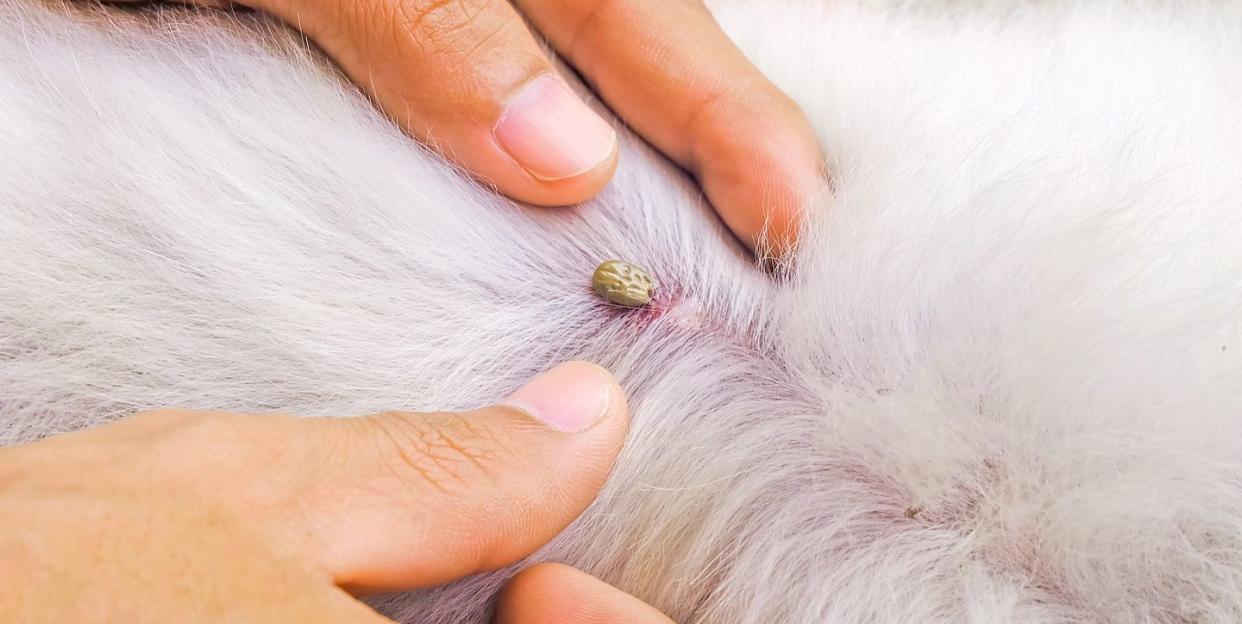
"Hearst Magazines and Yahoo may earn commission or revenue on some items through these links."
Your dog just wants to play, so of course he was being his spunky, adventurous self while running around in the grass, rolling in leaves, or even just hanging out in the backyard. Trouble is, now you’ve found a tick embedded in your pup’s skin—and you need to know how to get it out ASAP.
But hold up, can dogs even get Lyme disease? The unfortunate answer is yes. “Ticks are a very serious threat because they transmit a lot of diseases to dogs, including Lyme, anaplasmosis, and Rocky Mountain spotted fever,” says Natalie Marks, D.V.M., veterinarian and medical director at Blum Animal Hospital in Chicago. “These can cause a variety of problems in dogs, including joint arthritis, eye diseases, kidney failure, and death.”
If you do find a tick on your dog, you’ll want to remove the tick as soon as you can. “Once a tick has attached and starts to feed, the risk of disease transmission starts,” says Dr. Marks.
What does a tick bite look like on a dog?
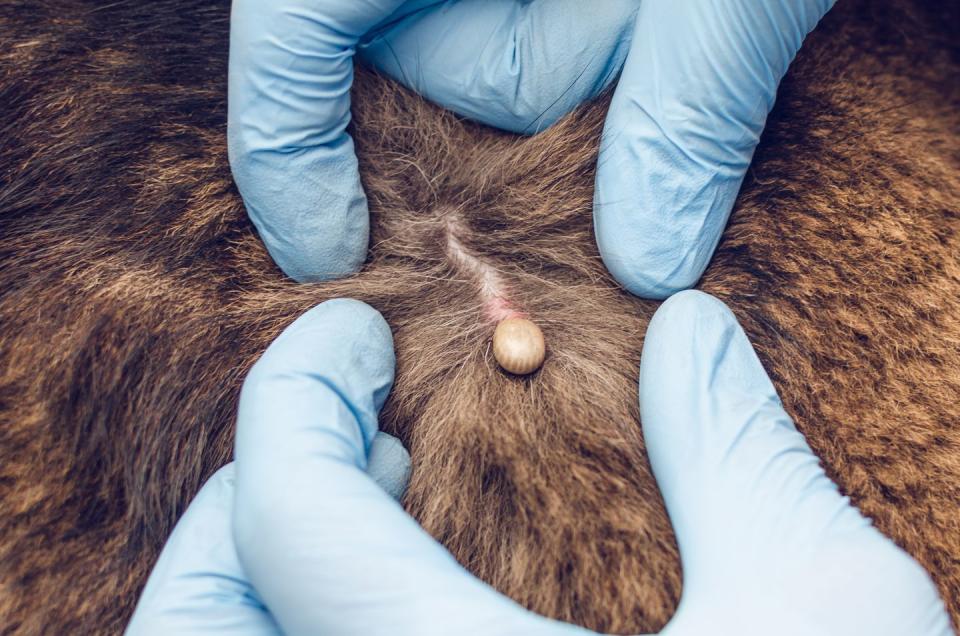
Ticks are incredibly tiny (they can be the size of a pinhead) and easy to miss until they’re engorged with blood, which happens once they’ve been attached for days. That’s why it’s so important to check your dog for ticks after you’ve been outdoors in tick territory: forests and wooded areas, gardens, tall grasses (including beach grass) and brush, leaf litter, and rock walls.
Ticks bites can happen anywhere, but the critters gravitate toward warm, tucked-away areas. When doing your tick check, always inspect your dog’s head, neck, feet (in between toes), armpits, and ears closely by running your fingers over your dog’s body, paying particular attention to any bumps or swollen areas. Oftentimes, ticks are hidden underneath the fur, so they may not be visible right away, according to the Humane Society of the United States.
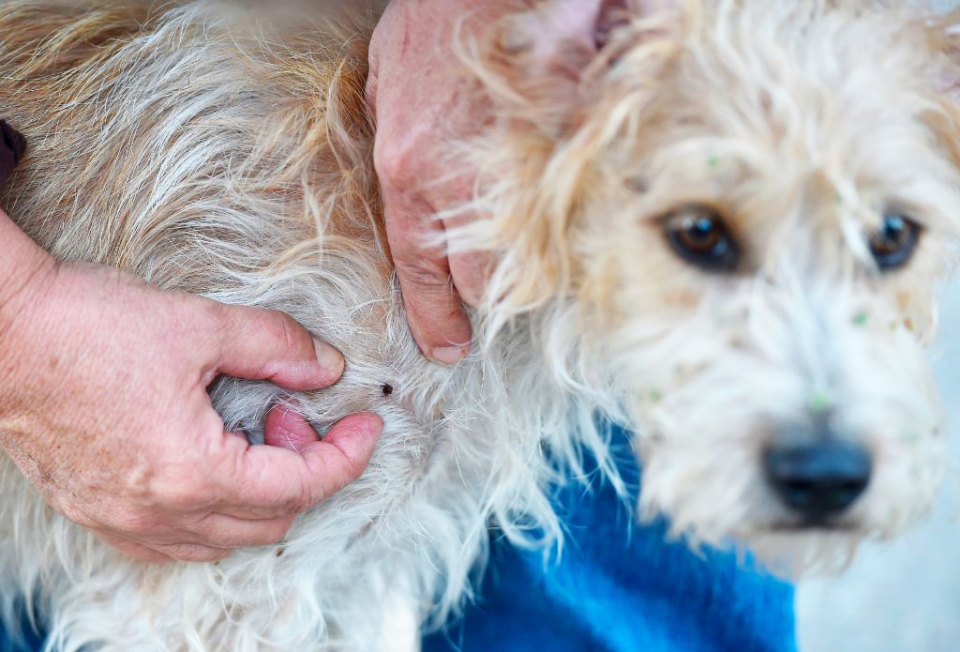
If you do find a tick attached, it may be small with its body and legs sticking out if it’s a fresh bite, or a bit more engorged if it has already started feeding. The area may also look red and irritated, especially if your dog has been scratching at it.
It’s important to remember that you should check yourself for ticks, too, since they can transfer between hosts.
How to remove a tick from a dog safely
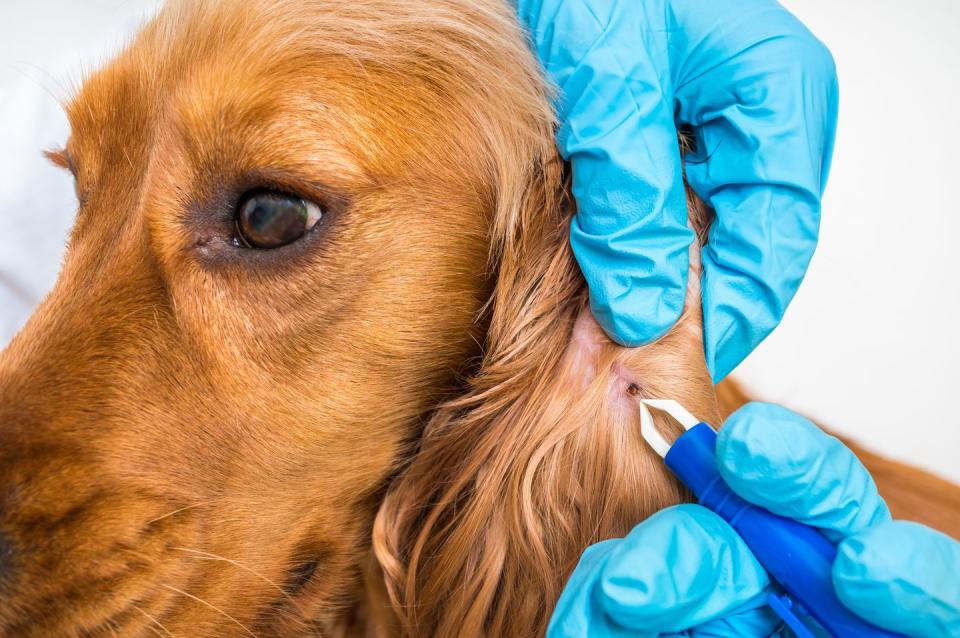
1. Grab a pair of tweezers.
Fine-pointed tweezers are best for grasping tiny ticks. Try a basic pair or one designed specifically for ticks, like these from TickEase. Put on gloves (to protect yourself from possible bacteria transfer) and “grab the tick at the base of the head where it’s attached to the skin and pull directly out in one motion,” says Dr. Marks.
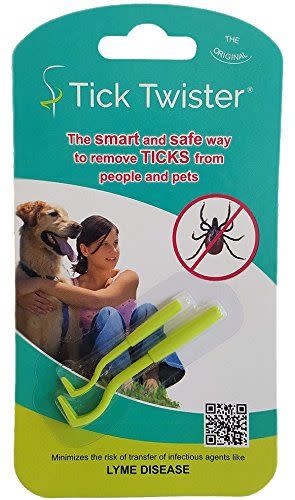
Tick Twister Tick Remover Set
$6.55
amazon.com
The Humane Society also recommends tick removers (preferably disinfected with isopropyl alcohol), like the Tick Twister. Slide the remover under the tick and then pull the tick swiftly out of the skin. Alternatively, if neither option makes you comfortable, you can also ask your vet to remove it for you.
2. Clean the tick bite.
If you were able to get the tick out in one, clean piece, save the tick in small plastic bag and note the date you found it (in case your vet needs it for future testing). Then, with clean hands, wash the bite area with warm, soapy water. “Eventually the site of the bite will scab and heal,” says Dr. Marks.
3. Call your vet.
If your attempt at tick removal failed and the critter broke in half while pulling it out, make an appointment with your vet. Any piece left in your dog increases the risk of transmission of potential disease-causing bacteria, Dr. Marks says. Keep an eye out for any signs of infection, like swelling, redness that does not go away, or irritation.
You should also keep an eye out for any unusual symptoms or behavior that could signal a tick-borne illness, like reduced energy, swollen joints, loss of appetite, pain, or a fever.
4. Get a screening.
Four to six weeks after a tick bite, your dog should be screened for tick-borne diseases, says Dr. Marks. Your vet will use a four-way test that looks for the three most common tick diseases (as well as heartworm) to ensure your pup stays healthy.
Stay updated on the latest science-backed health, fitness, and nutrition news by signing up for the Prevention.com newsletter here. For added fun, follow us on Instagram.
You Might Also Like

